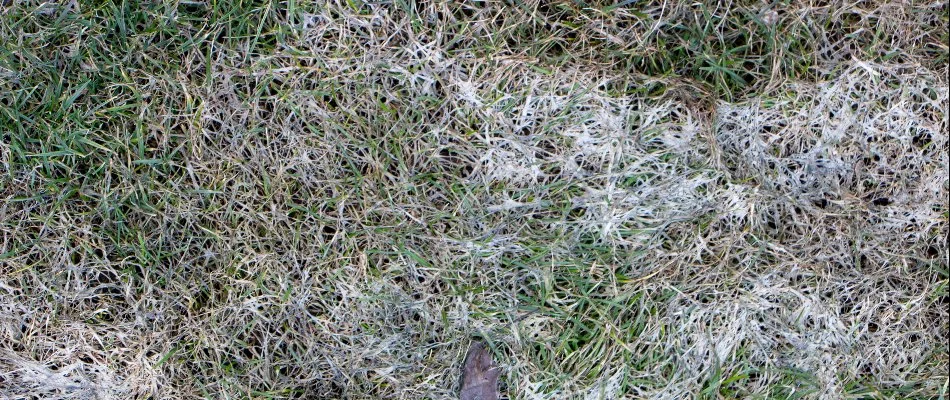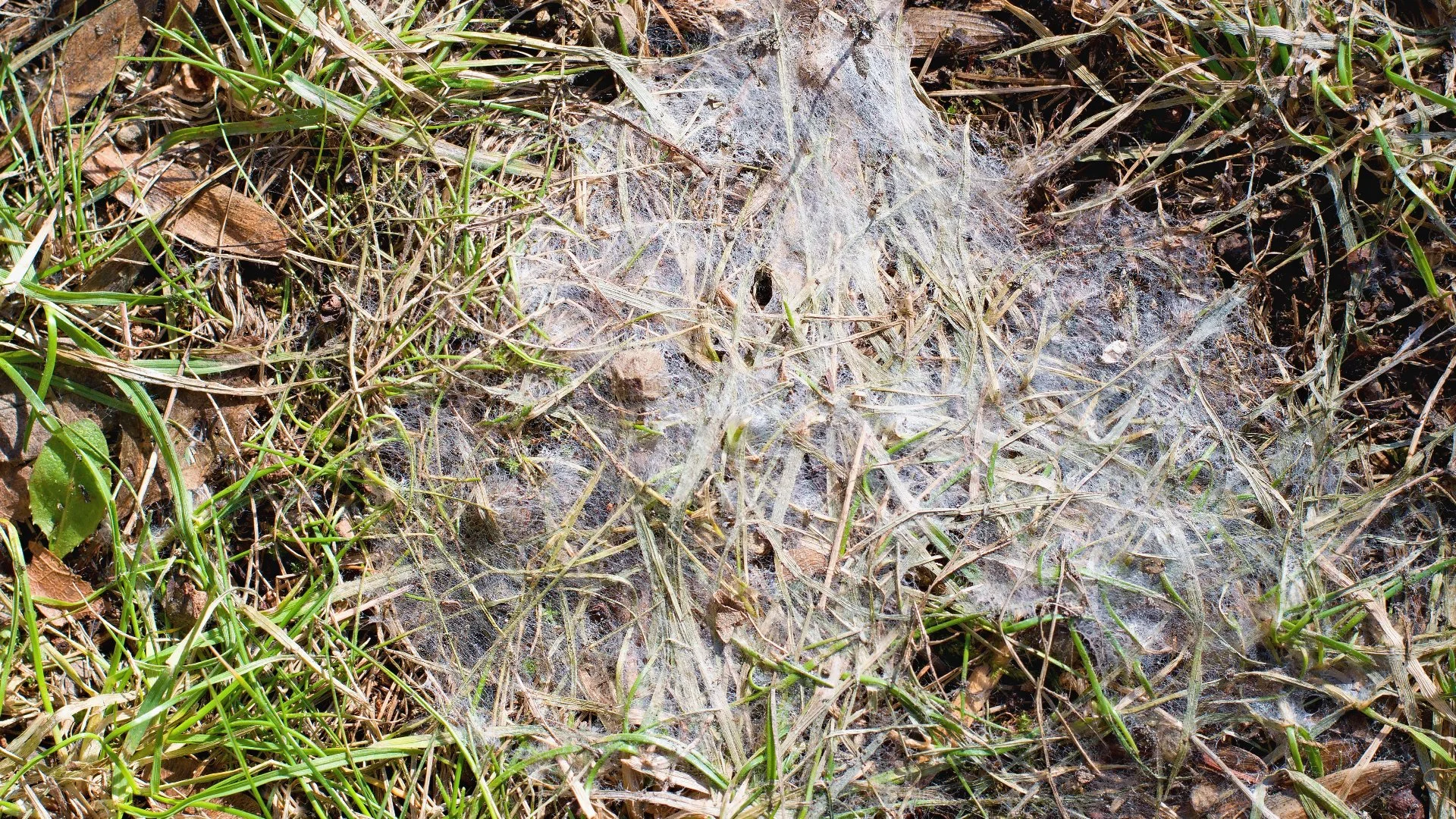Snow mold is a problematic lawn disease that commonly affects cool-season lawns in Michigan when they are dormant and vulnerable. This disease is caused by fungi that lie dormant in the ground throughout the year and become active when it gets covered in snow. Depending on what type of fungus affects your lawn, it can suffer from either gray snow mold or pink snow mold, which can both cause patches of dead, matted grass blades. Snow mold commonly occurs when leaf piles are left on top of the grass and become covered with snow. If your lawn shows signs of this disease once the snow melts, contact professionals and schedule a curative treatment as soon as possible to eliminate it. Then, enroll in a lawn fertilization and weed control program to fortify your lawn's health and help it withstand diseases like snow mold in the future.
What is snow mold, and what damage can it cause to your lawn?

Snow mold is a lawn disease caused by fungi present in the ground throughout the year. These fungi are activated when temperatures consistently stay below 50 degrees Fahrenheit in the winter. There are two types of this lawn disease: pink snow mold and gray snow mold. While both can look similar, there are certain differences between the two:
- Gray snow mold: Gray snow mold appears as circular patches of dead, matted, tan, or grayish brown-colored grass blades. A grayish-white mycelium, which is thread-like fungi growth, also covers these patches.
- Pink snow mold: Pink snow mold first appears as orange or brown patches of dead grass, eventually fading to a tan or white color with a pink margin.
Snow mold can significantly affect your lawn's health and appearance, especially when it reemerges in the spring looking patchy and weak! After all, it wreaks havoc on your lawn while it is covered in snow, so signs will only be noticed once it melts. However, by then, the damage will already be done.
What conditions are conducive to snow mold?
Snow mold thrives when the grass is covered with snow. However, conditions can be worse when you let piles of leaves sit on your lawn throughout the winter. The fungus that causes snow mold loves dark, damp environments, and a thick pile of leaves can trap moisture and create conducive conditions for it to develop. Additionally, if your lawn doesn't have proper drainage, it'll stay consistently moist and provide good conditions for this fungal disease.
What should you do if you notice signs of snow mold on your lawn once the snow melts?
If you notice signs of snow mold on your lawn once the snow melts, the best thing you can do is contact professionals and schedule a curative treatment as soon as possible to eliminate the infection. Professionals are equipped with the right treatment to target the disease and stop it from wreaking more havoc on your lawn. However, after the infection is treated, you still need to nurse your lawn back to health and keep it in good shape to resist stressors like fungal diseases in the future! Because of this, you'll want to get your lawn on a fertilization and weed control treatment schedule so it receives essential nutrients to grow stronger without having to compete with invasive weeds.
Call us today to sign up for our lawn disease control service!
If your lawn is showing signs of snow mold, we can help. Our team at Outdoor Expressions Landscaping offers a top-notch lawn disease control service to commercial and residential properties, as well as HOAs, in East Lansing, Okemos, Haslett, MI, and surrounding areas. We have effective curative treatments that can target snow mold and other lawn diseases, like dollar spot and rust. We can also help your lawn recover with our fertilization and weed control treatments! Call us today at (517) 333-7999 to sign up for our lawn disease control service.




Comments (0)
Thanks for your comment!
Thanks for your feedback! Your comments have been successfully submitted! Please note, all comments require admin approval prior to display.
Error submitting comment!
There is a problem with your comment, please see below and try again.